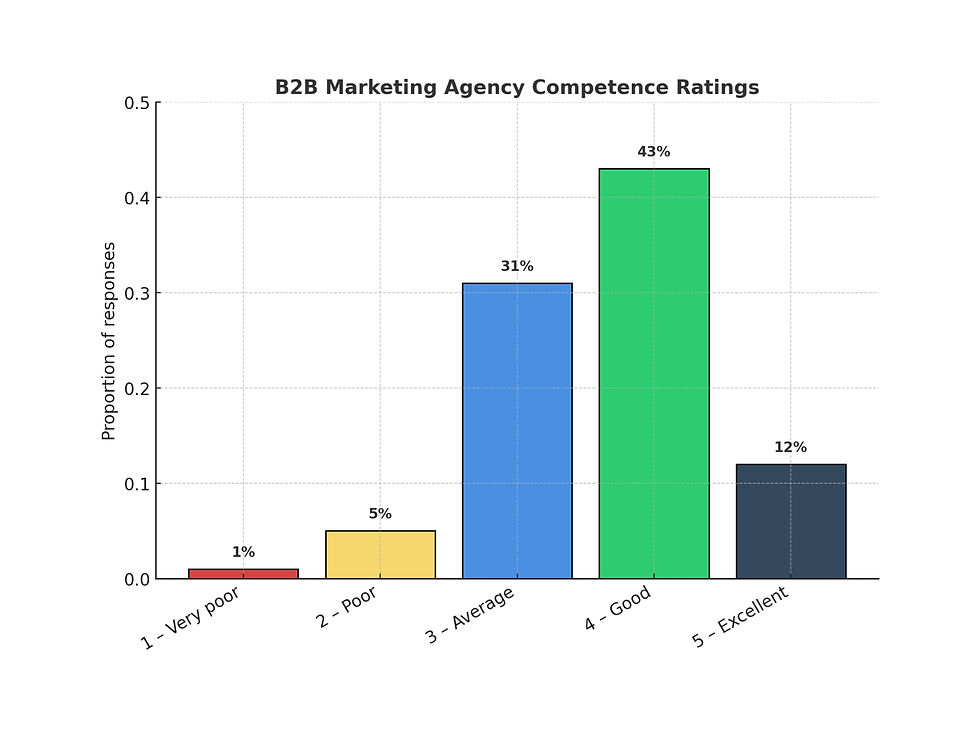Stop Wasting Budget: Target the Right B2B Buyer at the Right Time
- catlinpuhkan
- 5 days ago
- 3 min read
Urmet Seepter, Partner @Exponential
Nobody wakes up in the morning thinking, “Today I’ll buy a mobile medical unit.” But when the need arises, decisions in B2B markets often happen quickly—and the shortlist of potential suppliers is short.
For companies selling specialized products or services internationally, understanding how potential customers find and evaluate new partners is essential. Without this insight, even the best product can remain invisible at the moment it matters most.
Based on my experience working with international B2B clients, potential customers generally follow two distinct paths to find suppliers. Knowing which path your customer is on helps you choose the right marketing channels and messages—and ultimately win more deals.
1. The Functional Buyer: Searching with Intent
The functional buyer has a clear task or problem to solve. Maybe there’s a tender process or a critical project deadline. They know what they need and start searching for suppliers who can deliver.
For example, imagine a logistics manager who needs an expandable medical trailer or a rescue container manufacturer for an urgent project. This buyer types very specific queries into Google: “expandable medical trailer,” “mobile command center quote,” or “rescue container supplier Europe.”
This is a high-intent buyer—someone who is ready to act and likely close a deal soon. Your opportunity is to be visible right at that moment.
Google Ads are the most effective way to reach these buyers—but only if you target the right keywords.
Here’s the key: target transactional keywords, not informational ones.
Transactional keywords signal buying intent. They include words like quote, pricing, buy, demo, or specific product names combined with action terms. For instance, “mobile command center quote” or “purchase expandable trailer” indicate the user is close to making a decision.
Informational keywords, on the other hand, are used when someone is still learning or researching. Searches like “what is a mobile command unit” or “benefits of rescue containers” show early-stage interest but not immediate buying intent.
If you focus on informational terms with Google Ads, you risk wasting budget on visitors who are not ready to convert. Instead, reserve your ad spend for transactional keywords that attract functional buyers actively seeking solutions.
2. The Open-Minded Buyer: Inspired by What They See
The second type is the open-minded buyer. These buyers are not actively searching for a product or supplier at the moment but are open to discovering new options. They might be browsing LinkedIn, watching industry videos on YouTube, or scrolling through newsfeeds on Meta platforms.
This buyer type is common in industries like wholesale, hospitality, architecture, and design—sectors where trends, inspiration, and long buying cycles are common. They aren’t ready to buy today, but your ad can plant a seed for future consideration.
The best channels to reach open-minded buyers are mass-reach platforms like YouTube and Meta (Facebook/Instagram).
However, there are some important rules to follow to avoid wasting impressions or attracting the wrong audience:
Be clear about what your product is. Don’t rely on vague or lifestyle images that confuse viewers. For example, if you sell mobile medical units, your ad should clearly show the product and its purpose.
Define who the product is for. Avoid ads that could attract retail buyers or casual viewers. Make your audience targeting and messaging specific to businesses or industries you serve.
Avoid clickbait or misleading creative. Open-minded buyers respond best to honest, straightforward messaging that respects their time and intelligence.
Reaching open-minded buyers through these channels builds brand awareness and consideration. They might not contact you immediately, but when the need arises, your company will already be on their shortlist.
Why This Matters
Many companies make the mistake of treating all potential buyers the same way, using the same ads and channels for everyone. This scattergun approach leads to wasted budget and missed opportunities.
Instead, understanding the two buyer types helps you tailor your international B2B marketing strategy:
Use Google Ads targeting transactional keywords to catch functional buyers when they’re actively searching.
Use YouTube and Meta ads with clear, honest messaging to inspire open-minded buyers before the need becomes urgent.
This dual approach creates a steady pipeline of leads—some ready to buy now, others warming up over time.
Final Thoughts
Selling internationally is complex. Your customers don’t all behave the same. Knowing whether they are functional or open-minded buyers shapes how and where you communicate with them.
If you show up at the right moment with the right message, you’ll avoid falling off their radar. Instead, you’ll be the natural choice when they finally say, “Yes, let’s work with this partner.”


